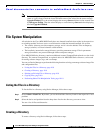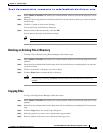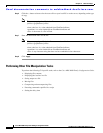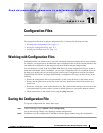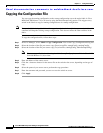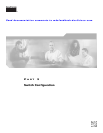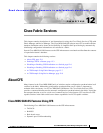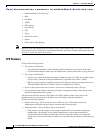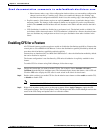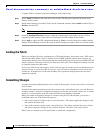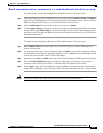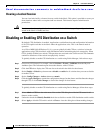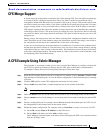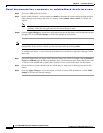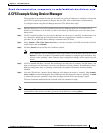
Send documentation comments to mdsfeedback-doc@cisco.com.
12-2
Cisco MDS 9000 Family Fabric Manager Configuration Guide
OL-6965-03, Cisco MDS SAN-OS Release 2.x
Chapter 12 Cisco Fabric Services
About CFS
• Distributed Device Alias Services
• iSNS
• Call Home
• VSANs
• IVR topology
• Port security
• NTP
• Syslog
• SCSI flow services
• fctimer
• Fabric Start Config Manager
Note Most tabs in the Information pane for features using CFS are dimmed until you visit the CFS tab. The
CFS tab shows which switches have CFS enabled and shows the master switch for this feature. Once the
CFS tab is visited, the other tabs activated.
CFS Features
CFS has the following features:
• Two modes of distribution:
–
Uncoordinated distributions where multiple parallel distributions are allowed in the fabric.
–
Coordinated distributions where only one distribution is allowed in the fabric at any given time.
• Two scopes of distribution:
–
Logical scope where the distribution happens within the scope of a VSAN. An example feature
is port security, where the configuration database is applicable only within a VSAN.
–
Physical scope where the distribution span the entire physical topology. Example features are
NTP and DPVM (WWN based VSAN), which are independent of VSANs.
• A peer-to-peer protocol that does not have a client-server relationship at the CFS layer.
• A merge protocol that facilitates the merge of feature configuration during a fabric merge event
(when two independent fabrics merge).
All switches in the fabric must be CFS capable. Non-CFS capable switches do not receive the
distribution and may prevent part of the fabric from receiving the intended distribution.
CFS has the following attributes:
• Implicit CFS usage—The first time you issue a CFS task for a CFS-enabled feature, the
configuration modification process begins and the feature locks the fabric.
• Temporary buffer—This term differs based on the feature:
–
Some feature saves the changes to the temporary buffer when you perform configuration
modifications. The changes are not applied immediately to ensure that the database is
synchronized with the database in the other switches in the fabric. When you commit the
changes, the contents of the effective database are overwritten by the contents of the temporary
buffer.



